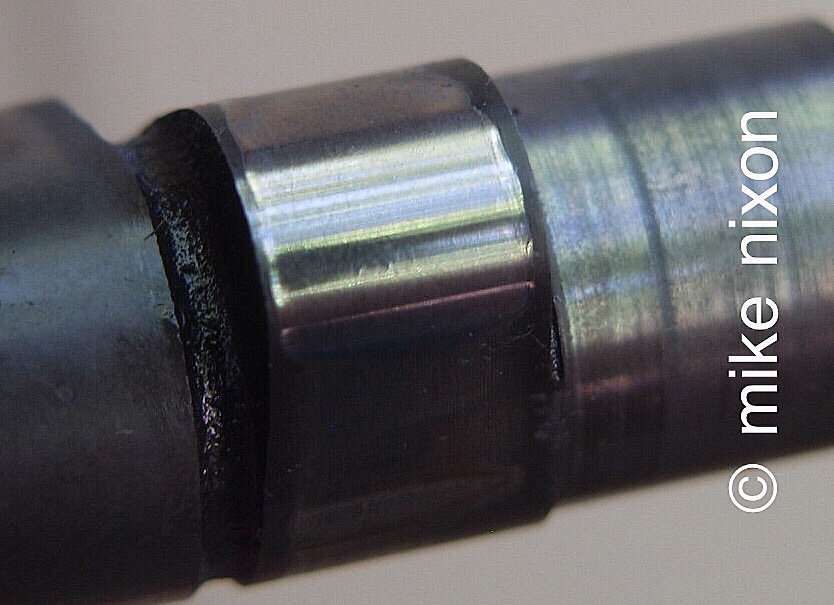
You're looking at a camshaft lobe, and though this is a surprising amount of wear for the mileage, it's not catastrophic. In fact it's not even excessive wear. Yet this wear is more than most people would expect in just 4900 miles. That's right, 4900. It's normal. The fact is, camshafts in vintage Hondas can be observed to wear their cams at a rate between 0.001 inch to 0.003 inch per thousand miles.1
Japanese motorcycle cams are fairly soft. With very few exceptions, any of these cams can easily be drilled with a standard HSS drill bit, the kind you can pick up at the bargain table at the hardware store. And the resulting chips experienced machinists recognize instantly as cast iron. Yup. Very soft. Below Rockwell 52 in fact, for you metallurgists. 2
The result is that vintage bikes with 20,000 to 40,000 miles have some significant wear on their cams. Enough to make the bikes perform signicantly below their potential, not the least of which because the wear changes valve timing by 5 to 10 degrees.
Two facts emerge. First, folks who swap in aftermarket cams are in most cases seeing gains not from the supposed advantages of said "high performance" products but rather from the simple elimination of the stock part's wear or misadjustment. 3
Second, this has prompted aftermarket cam suppliers to offer stock-spec cams. They're very useful and very timely products. How else can you restore the performance level the machine exhibited almost 50 years ago? A used stock cam won't get it -- most are worn as much or more than yours. A remanufactured cam is a huge boon.
Don't overlook the camshaft.
Notes:
1 This is not a guess. This is a documented, widely corroborated fact.
2 There are a very few cams that are not cast iron. The chromoly cams found in the ZX-10R and similar hyperbikes are among the few exceptions.
3 I have proved this countless times with all sorts of parts. The stock minimally-worn part properly installed and maintained out-performs the so-called performance part every single time.







